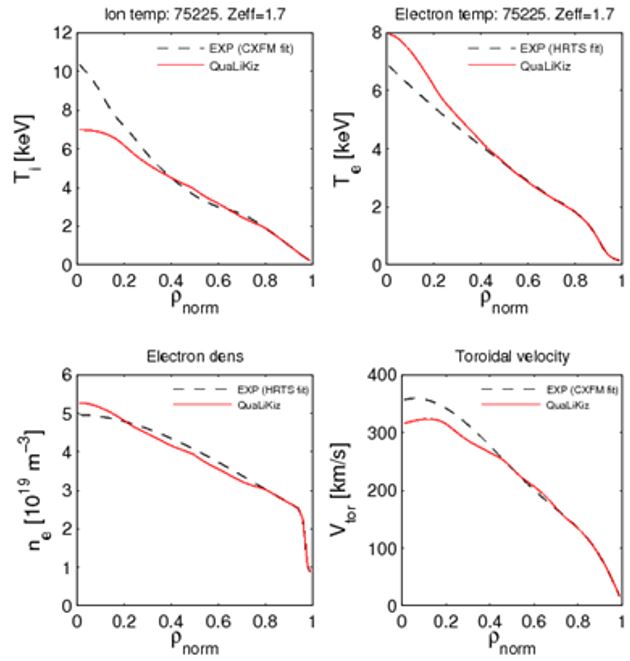Reduced turbulent transport models are constructed to increase computational tractability compared to full nonlinear codes. They are designed to allow routine simulation of tokamak discharge evolution. They invoke the quasilinear approximation, which is largely valid in the core region of tokamak plasmas. They rely on nonlinear simulations for validating their ansatzes and normalizing factors.
These quasilinear models have proven successful in reproducing experimental profiles in many cases. We are co-developers of the QuaLiKiz quasilinear gyrokinetic transport model [C. Bourdelle et al., Phys. Plasmas 14 112501 (2007)], which provides a ×6 order of magnitude speedup compared to nonlinear simulations. 1 sec of JET plasma evolution computation costs approximately 10 hours using 10 processors within integrated modelling frameworks, allowing practical discharge evolution using small computing clusters. These codes, validated by present-day experiments, are a major tool in extrapolating performance to future experiments such as ITER, as well as reactors.

M. Romanelli et al., Proc. 23rd International Toki Conference (2013)] of core transport in the JET hybrid scenario discharge 75225. Presented by J.Citrin et al., EPS Leuven 2016.
The simulation simultaneously included particle, heat, impurity, and momentum transport.
The boundary condition for the simulation was taken from measurements at normalized toroidal flux coordinate ρnorm=0.8. Future simulations envisage the self-consistent
inclusion of a pedestal model for the outer core region. This sets the plasma profiles according to MHD stability limits if the H-mode bifurcation condition is met.